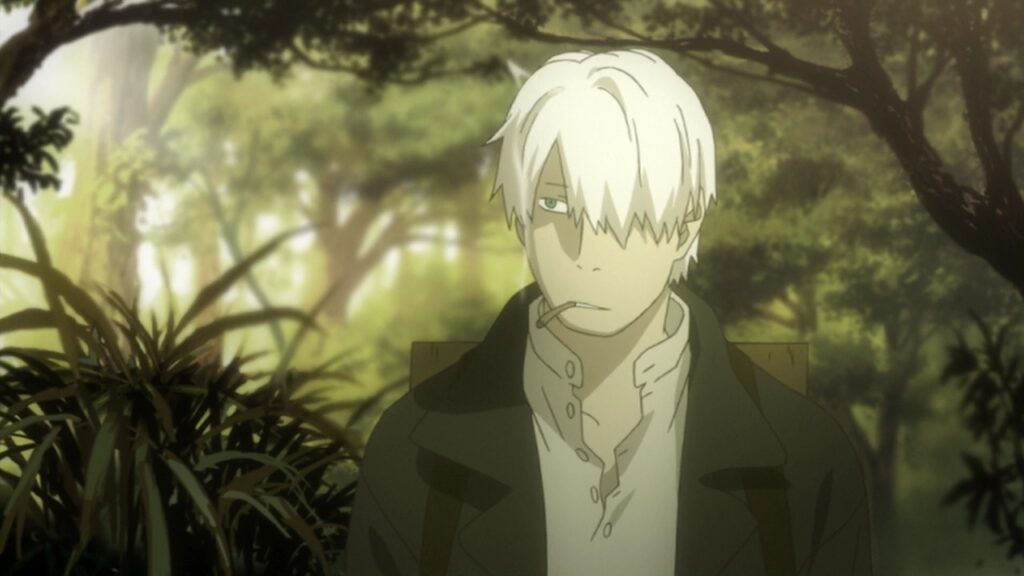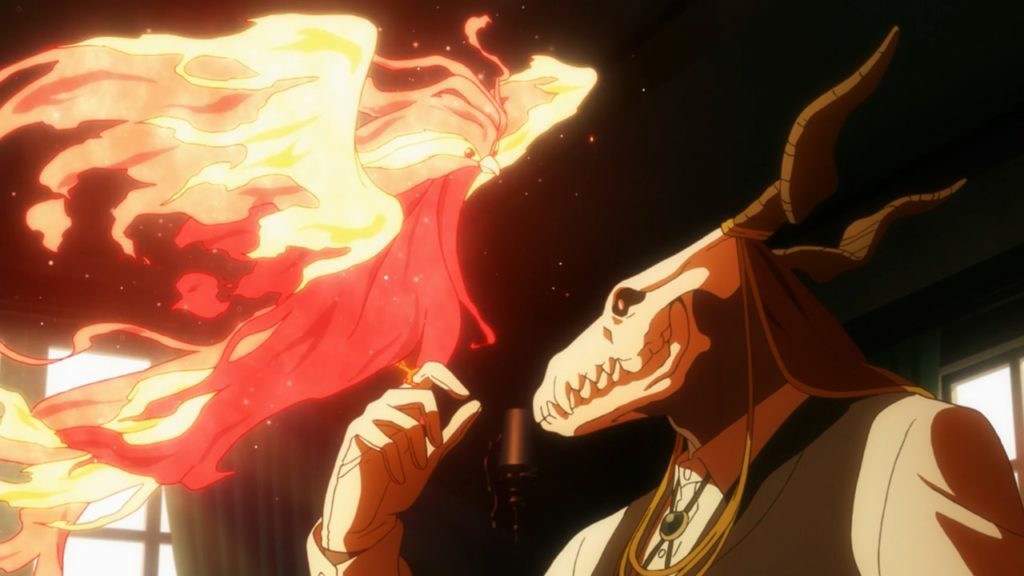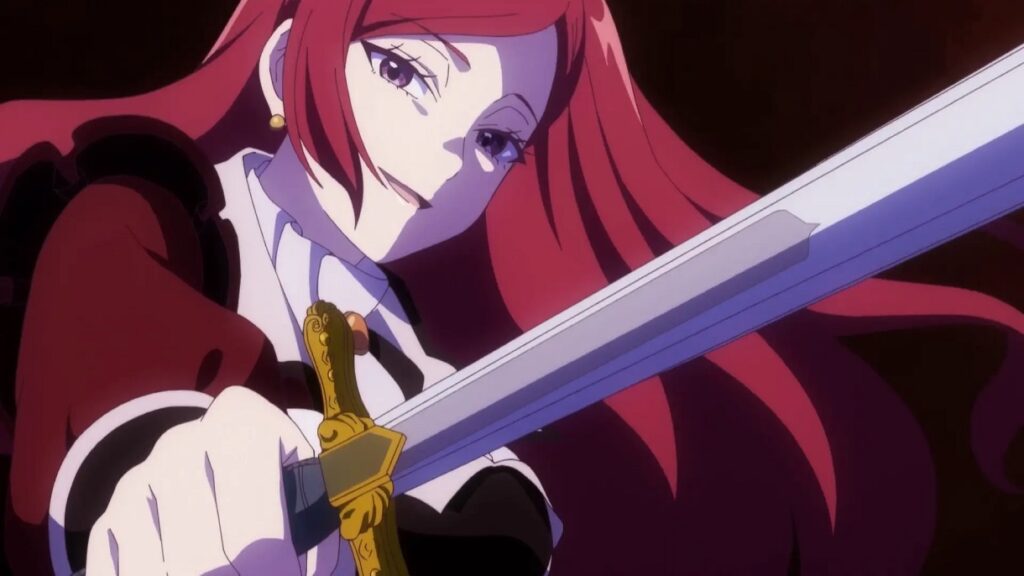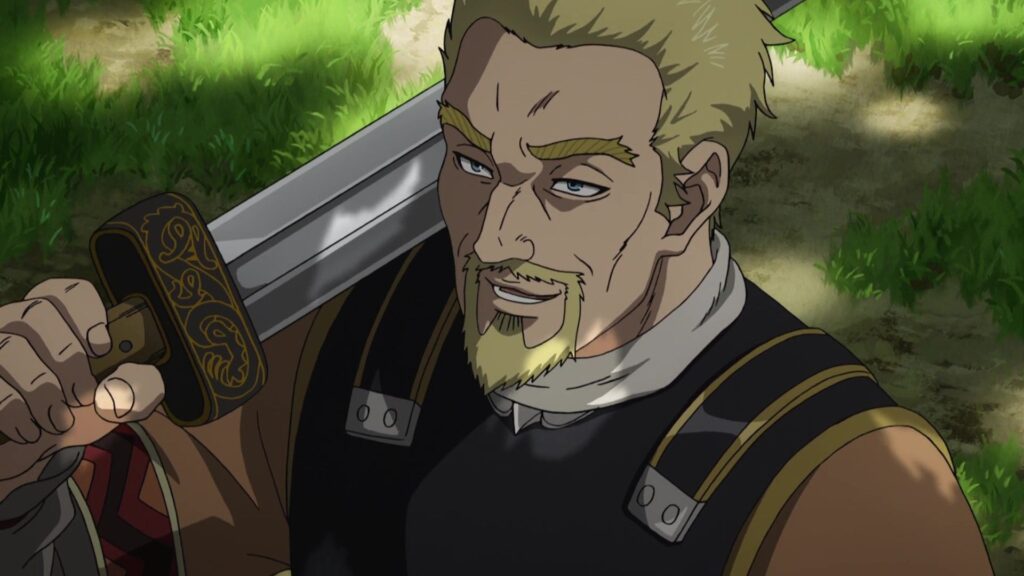Most anime features some kind of linear single plot or several individual stories chopped into arcs that feed into an overall plot.
Midoriya wants to become a hero so you follow his training to become strong, which includes school festivals, training camps, and shadowing professional heroes. Ed wants to get his brother’s body back which requires him to become a state alchemist in order to even investigate the tool he needs, and that requires him to actually do his job as a government employee.
You get the point.
While a series can drift off a main into side stories, they will always follow a plot line to, hopefully, an end. However, not all anime follows this common narrative structure.
There are some anime series that might have some sort of overall goal, but most of the episodes are self-contained stories that contribute to the growth of the world or the characters, but not always to any sort of plot.
These episodic anime series are great for people who have maybe just time for one episode of anime every so often or are just too tired to keep track of something long, complex, and full for minor details that may be important later. If episodic anime is your jam, then check out these anime recommendations.
Best Episodic Anime
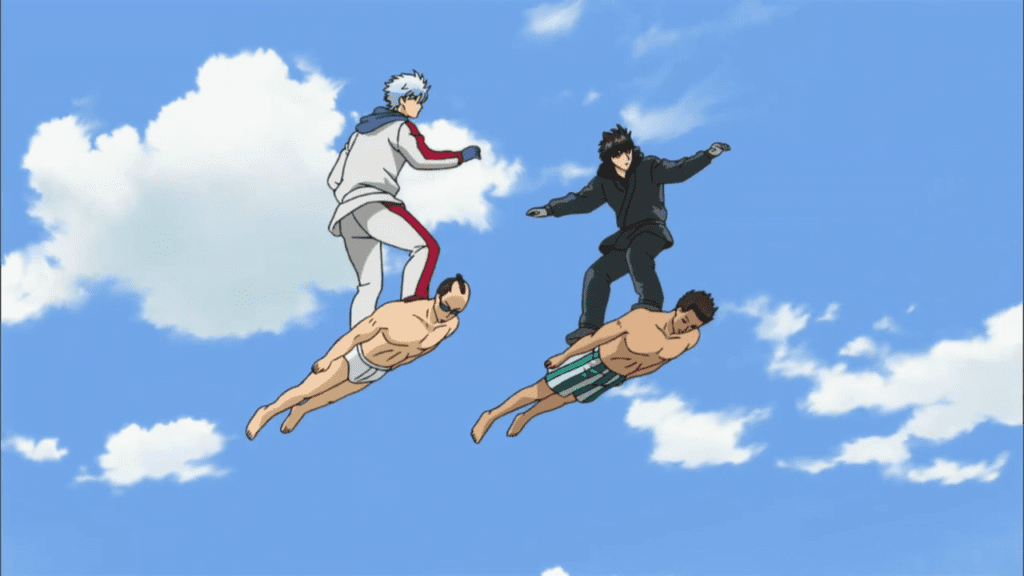
Episodic Comedy Anime
A large portion of comedy anime are of an episodic nature without a continuous plot, much like its western cartoon cousins. These series have one goal – to make you laugh. As such, they don’t necessarily need detailed characters or stories to tell. Instead, they can do the most random things for comedy during their singular episode time slot.
We could most definitely stretch this list to the bursting point by adding all these comedy series as single entries, but it would really just being saying the same thing a dozen different ways. Instead of doing that, here’s a quick and dirty list of recommendations of many good episodic pure comedy anime series without any sort of advancing plot.
- Nichijou
- School Rumble
- Mr. Osomatsu
- Azumanga Daioh
- Daily Lives of High School Boys
- Lucky Star
- Ghost Stories (Though it is only a comedy if you watch the dub)
- Sket Dance
- Asobi Aosbase
- Gintama
- Pop Team Epic
Now for non-comedy options!
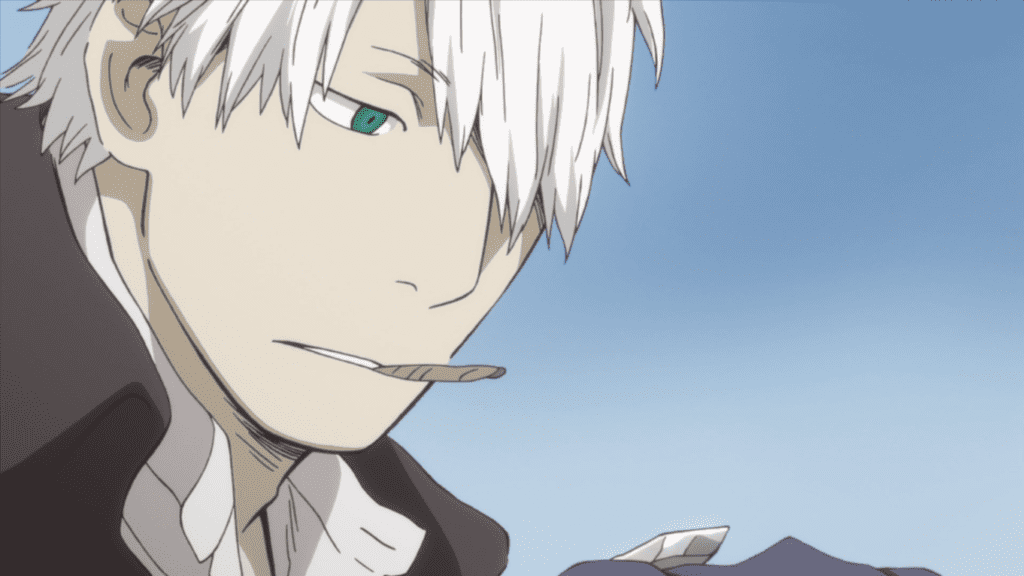
Mushishi
Mushishi is a series that is very much about the fantasy world and the creatures that inhabit it.
Mushishi is framed as being about a man traveling the world to study mushi, formless spirits that can have both good and bad effects on their surroundings. He goes from place to place examining mushi and looking into problems. For dire problems, he solves them if he can, but often there is little that can be done due to the unknown nature of the entities.
Every episode of Mushishi is a new location and a new mushi-related phenomenon. As it is not restrained by any one location or story, it allows Mushishi sport a wide array of episodic stories that range from silly to devastatingly heart-breaking that all muse on the human experience.
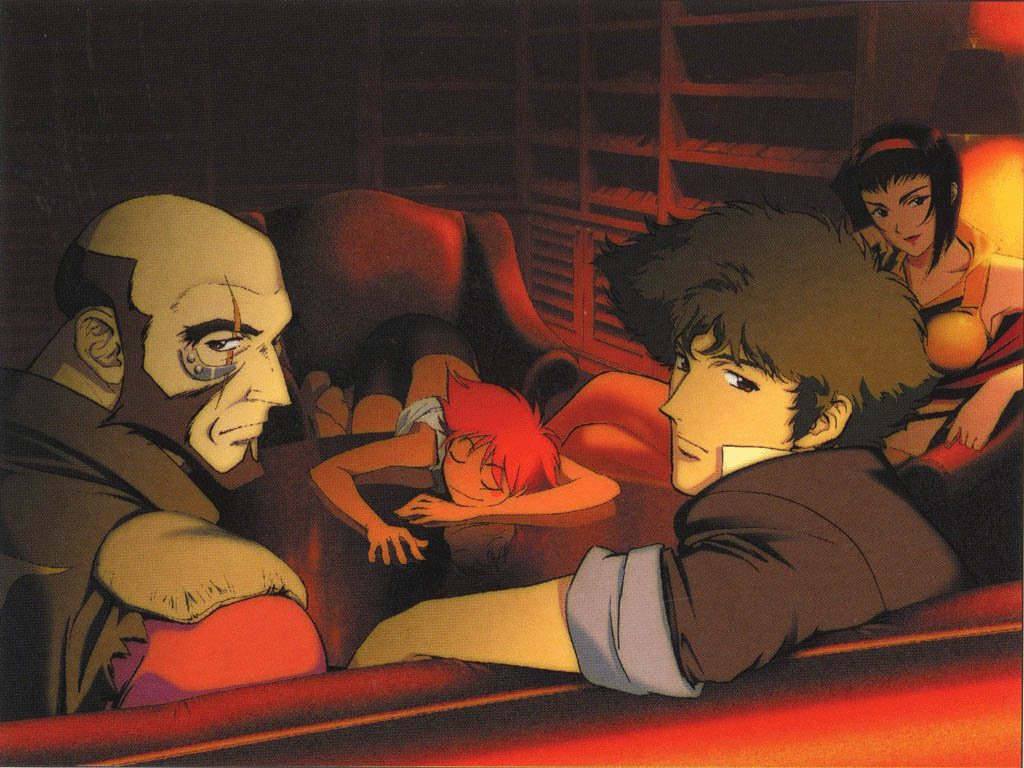
Cowboy Bebop
Cowboy Bebop is an anime that very much throws you into a story already in progress, but it isn’t a complex one.
You join the Bebop, a crew of space bounty hunters who are chronically poor and always hustling to bring in their next big bounty to put meat on the table. For much of the series, you follow this dysfunctional crew as they do everything from chasing bounties and hunting down VCR technology to battling space mold on their ship.
However, as Cowboy Bebop goes on, you realize that they have been feeding you plot in their episodic story. It just isn’t a linear plot, it is the individual character plots of the whole crew.
While three-fourths of the series is episodic, Cowboy Bebop does become more linear with the character plots near the end. Howeve, by then, you’re so invested, you might not even mind.
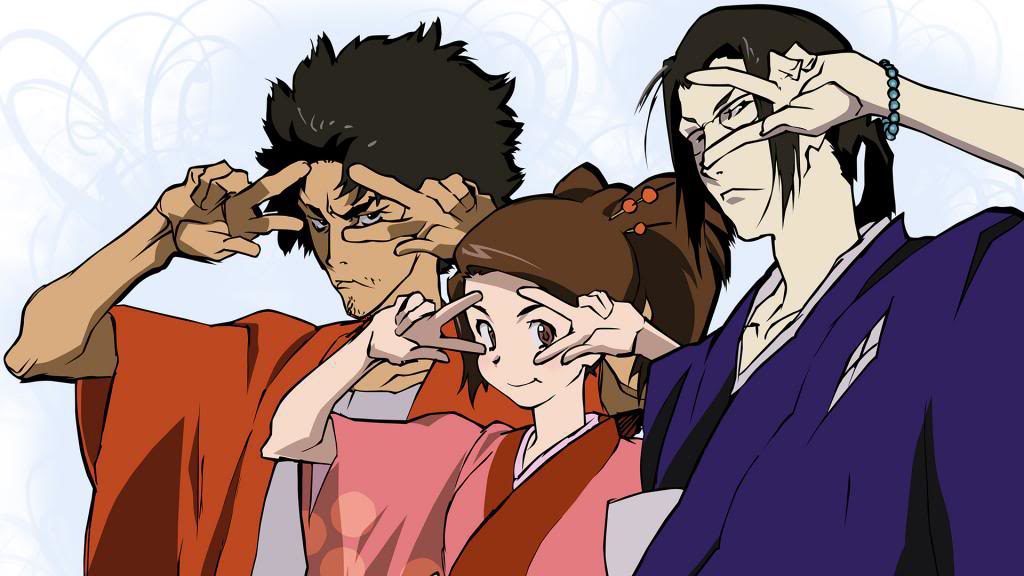
Samurai Champloo
In a similar vein to Cowboy Bebop, as it was made by the same director, Samurai Champloo does have more of an overall goal to the story – get Fuu to the samurai that smells of sunflowers.
Yet, getting there isn’t a series of hurdles to overcome, but rather, a series of adventures to have.
In Samurai Champloo, you follow a girl who hired two contentious bodyguards who couldn’t be more different in their personalities to help her find a vague man she only knows by smell. While doing so, often they are pulled into episodic shenanigans as they travel down the road.
Sometimes it is an eating contest. Sometimes it is getting high from burning marijuana fields. On occasion, the plot of the episode focuses on the past of the characters coming back to bite them.
Only in the very beginning and the very end does Samurai Champloo focus on that overall plot. Everything in between is journey.
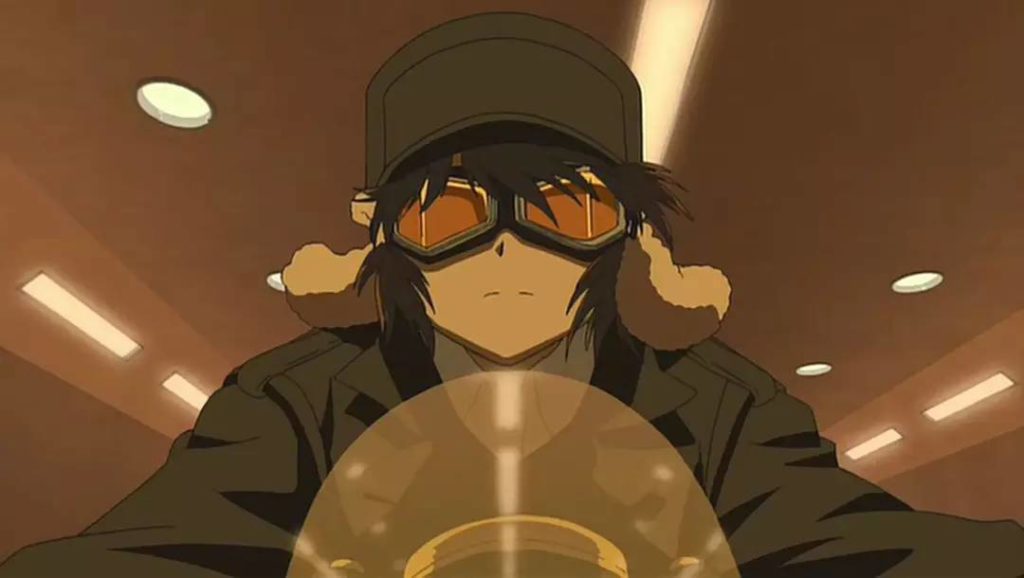
Kino’s Journey
The entire premise of Kino’s Journey is summed up in the title.
Kino’s Journey is about a girl named Kino on a journey around the world that she is doing just because she wants to see the world. She travels to new places where she stays for a specific set amount of days, and then moves onto the next place regardless of what happens.
Kino isn’t a hero. She sometimes gets swept up in horrible events, but there is nothing she can do about them. Sometimes, that means she just leaves places, and lets the dire consequences of their actions play out to the sad end that anyone can extrapolate to.
Similar to Mushishi and its ponderous musing on humanity, Kino’s Journey explores several philosophical concepts played out in the various cities, societies, and local governments that she visits. The series is very much taking you on a not-always-pleasant tour of a diverse lightly fantasy, almost post-apocalyptic world made up of various, self-contained cultures.
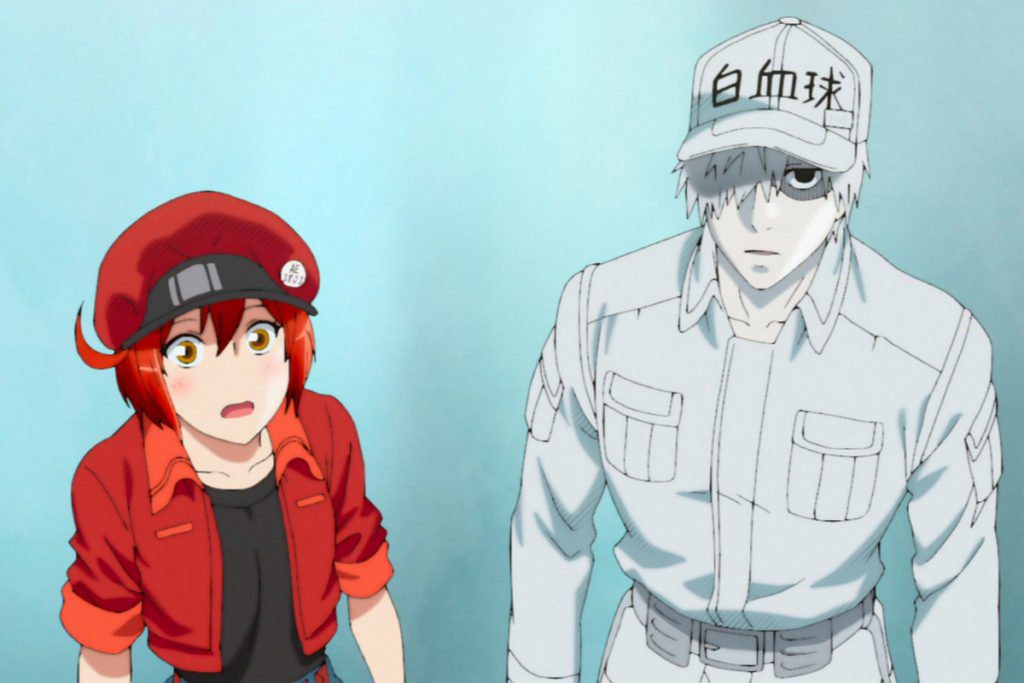
Cells at Work
Cells at Work is the story of you. Or rather, the story of what is happening inside of you.
Cells at Work follows a somewhat nameless main character who is the anime personification of a red blood cell in your body. She has a clandestine meeting with a white blood cell who saves her from a germ attacking cells, and the duo have a series of clandestine run-ins throughout the rest of this episodic story of what goes on inside your body.
Portraying the inner workings of your body as a sort of factory, corporation, and company town all mixed together, Cells at Work is both amusing and surprising accurately educational about what all these various cells-presented-as-anime-characters do both in real life and as a profession in their world.
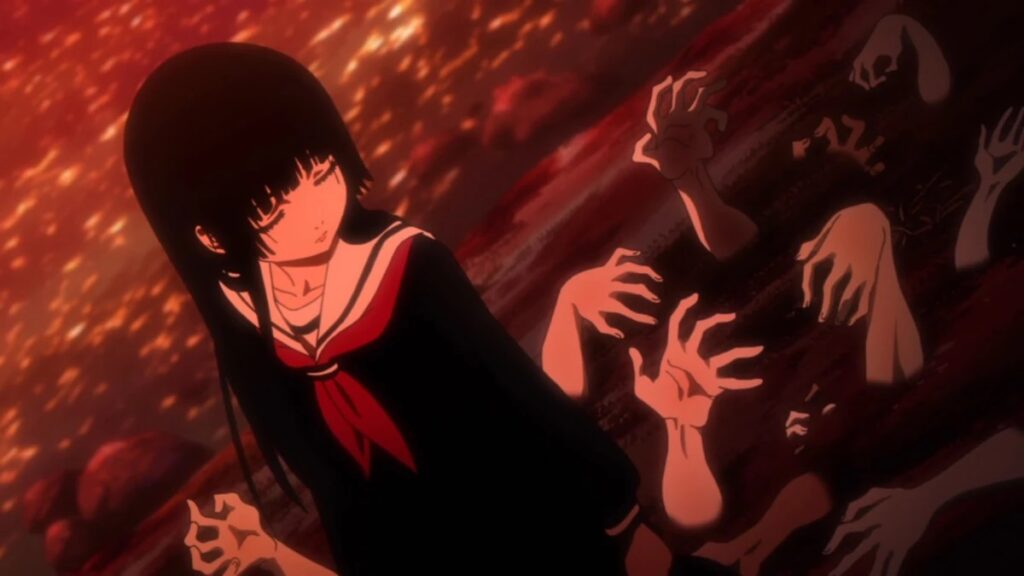
Hell Girl
While many of the more ponderous episodic series on this list come with a large side helping of melancholy, Hell Girl is an episodic anime for those who crave darker stories.
Hell Girl follows an entity that drags souls to hell. In this world, people who have been wronged can request that a soul is dragged to hell as their vengeance, but they also have to pay the price of damning their own soul in return.
It is a form of justice with a sinister price, meaning there are few if any happy tales present in the episode experience that is Hell Girl.
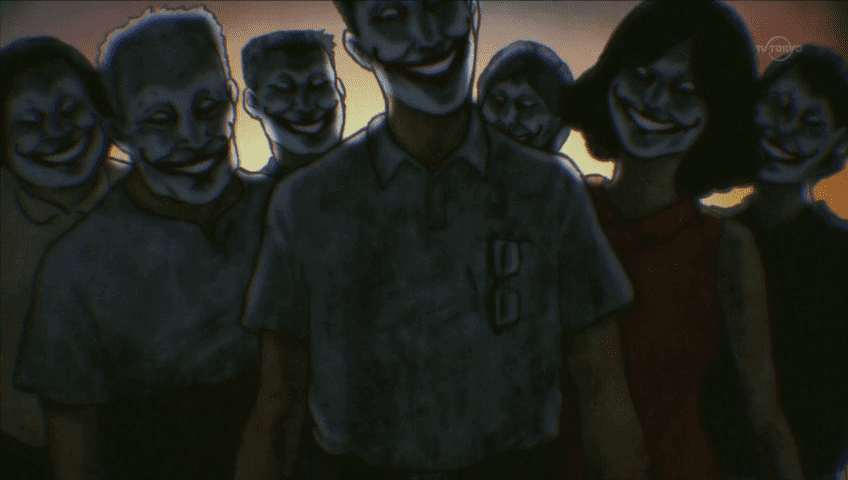
Yamishibai
While Hell Girl is dark, you can’t exactly call it horror. It’s more just depressing stories about relatable human emotions. However, Yamishibai feeds you as much horror as you can consume per four-minute episode.
As a short-form series, Yamishibai has four minutes to tell you a horror story. As much of horror is fully dependent on creating tension, good pacing, and genuine shock or surprise, the format actually helps to raise Yamishibai high in the ranks of truly scary anime horror stories since no plot ever overstays its welcome or attempts to over-explain itself.
Ranging from supernatural and urban legends to more human horror, Yamishibai tells a wide range of stories in each episode of its now-numerous seasons.
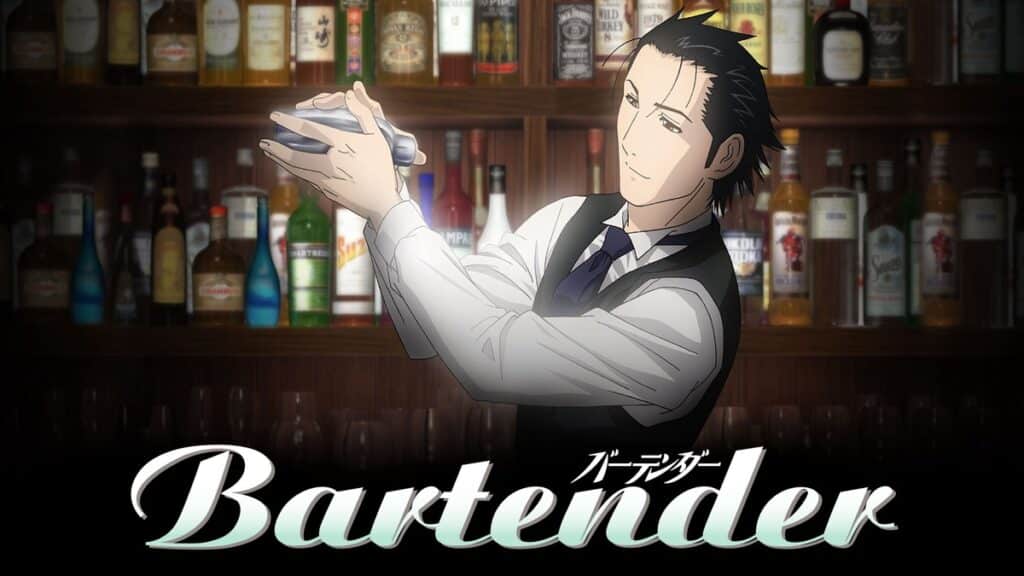
Bartender
There isn’t anything a strong drink can’t soothe. That’s the stance that Bartender has on the human experience.
Bartender is a series that follows a talented bartender that several people from a prestigious hotel chain are trying to poach from a hole-in-the-wall joint to work at their top-notch soon-opening bar. However, while that plot is explored in the manga this series is based on, the anime is actually just episodic stories of people coming into his bar with problems, and the bartender making a cocktail that can appropriately soothe them.
Do note this only applies to the 2006 version of Bartender. The 2024 remake of Bartender does have a more linear plot.

Natsume’s Book of Friends
Japan has a lengthy history with yokai and the various lore around the thousands of different mythical creatures, spawning from the Shinto belief that everything in nature has its own sort of god and many creatures be attributed to various phenomenon.
However, anime tends to only focus on a few specific beings, and rarely shows off the wider realms of yokai lore.
Natsume’s Book of Friends takes full advantage of the thousands of different legends to craft its episodic plot. The basic premise of Natsume’s Book of Friends is that a boy can see spirits, and has been ostracized because of it. However, he inherits his grandmother’s book that contains spirits that she had sealed away, and he is slowly freeing some of the more harmless ones.
Of course, as it has several powerful spirits sealed within, there are others that try to take this book. Yet, the large majority of Natsume’s Book of Friends is just the titular Natsume getting involved in a spirits’ usually sad story and helping them to a resolution without much need for violence.
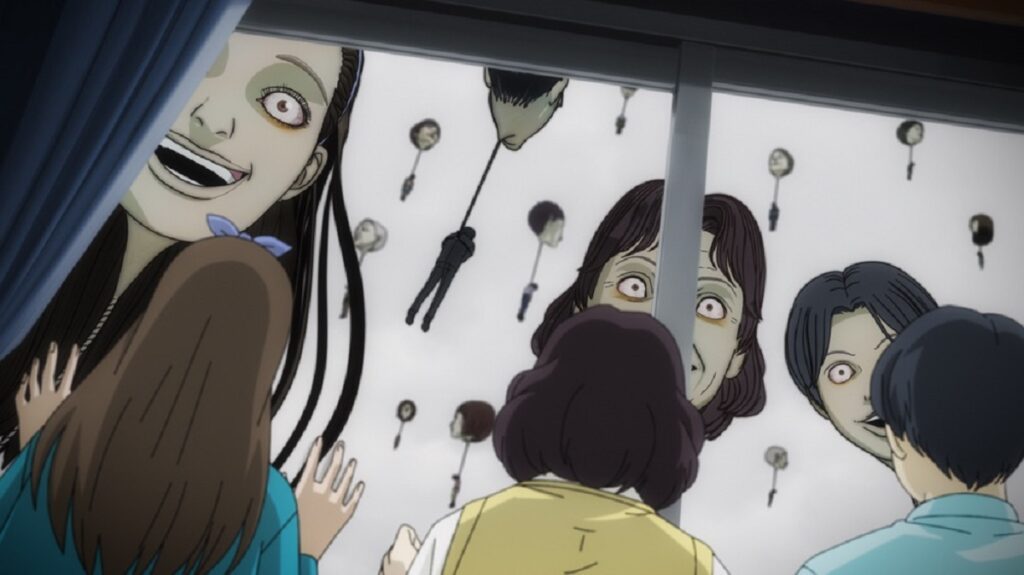
The Junji Ito Collection / Junji Ito Maniac
If you are in the mood for more horror, Junji Ito can now provide in anime form.
While Junji Ito is a legendary manga author in the horror genre, the anime adaptations of his work have been hit-or-miss. For the most part, the episodic anthology of his various works presented in The Junji Ito Collection and the later Junji Ito Maniac serve as a broad introduction to his horror storytelling.
While some stories in these series do span several episodes, although not always told in chronology, most episodes in both series take a short story from Junji Ito and adapt it anime. In it, you can expect grotesque body horror, the creeping unknown of cosmic horror, and even a little bit of “this is so weird its actually funny” horror done in a way that feels fully intentional.
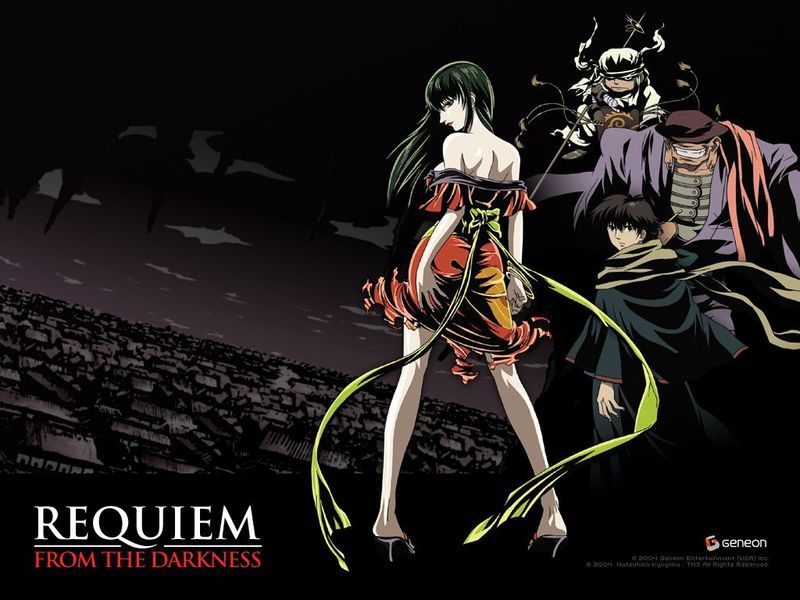
Requiem From The Darkness
Like a heady mix of Hell Girl and Mushishi, Requiem From The Darkness follows a wandering hopeful author in the Edo era who keeps having run-ins with a sinister trio. Each time he meets them in various places, he watches and helps them solve some sinister supernatural mystery happening in the area.
While lightly supernatural, much of Requiem From The Darkness also focuses on the darkness in the human mind that drives us to do awful things.
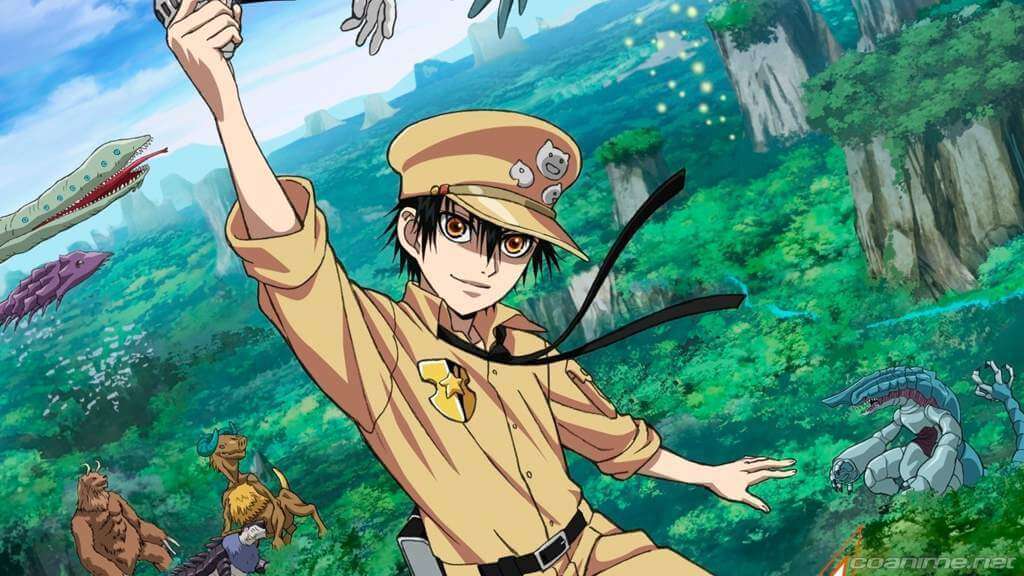
Ultramarine Magmell
If there is one downside to episodic anime, it is that you don’t generally get a lot of action. You get a lot of diverse stories, but few will ever try to fit shounen action in a story that is told episode-by-episode.
If that is something you were looking for, Ultramarine Magmell is one of the few anime that tried and does episodic action with some form of success.
The plot of Ultramarine Magmell is that it follows a powerful boy who runs search and rescue missions to the new continent that was recently discovered. This continent is full of unknown and extremely powerful monsters, which means more than a few people go missing there every year.
While it hints that Ultramarine Magmell has some sort of overall plot, the anime doesn’t really touch upon it. Instead, you get a series where each episode is a new story about the main character working a job with his assistant.
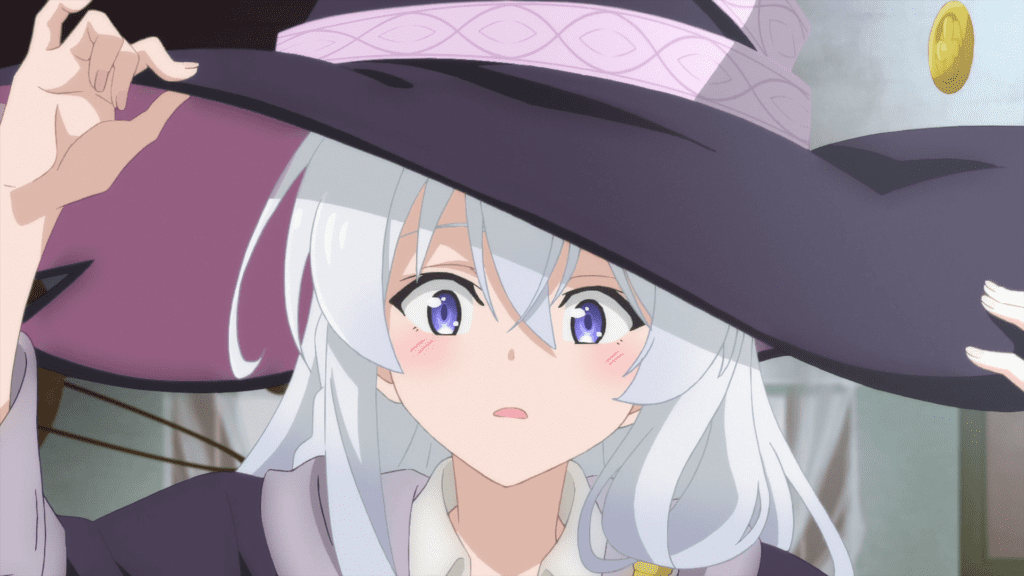
Wandering Witch – The Journey of Elaina
Like Kino’s Journey, Wandering Witch is about an equally as ponderous, though significantly more whimsical journey.
In Wandering Witch, you follow Elaina who, after hearing stories about a witch who traveled the world as a child, decided that was what she wanted to be. She became witch and now travels, getting involved in the stories of others before ultimately moving on.
However, the cheerful facade belays the surprisingly dark stories that you can find within. Wandering Witch can give you whiplash with how often it goes between cute girls doing whimsical fantasy things and cute girls just sort of witnessing human darkness play out while doing nothing to help.

The Grimm Variations
Anime has a long relationship with both eastern and western fairy tales. You can find the classics used as inspiration in many series, but few more obviously than The Grimm Variations.
In The Grimm Variations, it takes classic fairy tales from The Grimm Brothers and retells them in a non-traditional setting in each new episode. For example, Little Red Riding Hood is about a serial killer in a cyberpunk world while the Pied Piper is turned into a sort of heroine who offers liberation instead vengeance-driven child abduction.
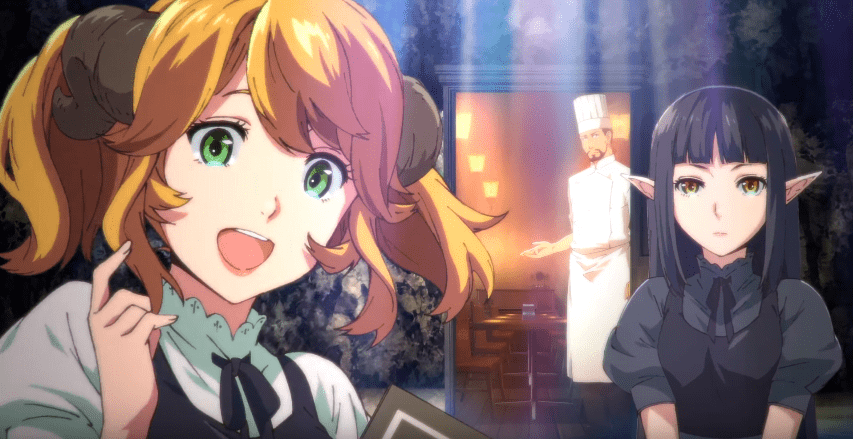
Restaurant to Another World
Hungry?
Most food anime can be enjoyed without being too concerned over any plot, but only a few are truly unfettered by a overall story.
Restaurant to Another World is an episodic series about a restaurant that closes its doors to the general public every so often in order to open its doors to another world and serve fantasy patrons their very favorite human dishes.
Of course, each new patron and each new dish comes with a story about why they like or how it soothes them. Essentially, you get human stories about the very human connection we form with foods, but from fantasy non-humans.
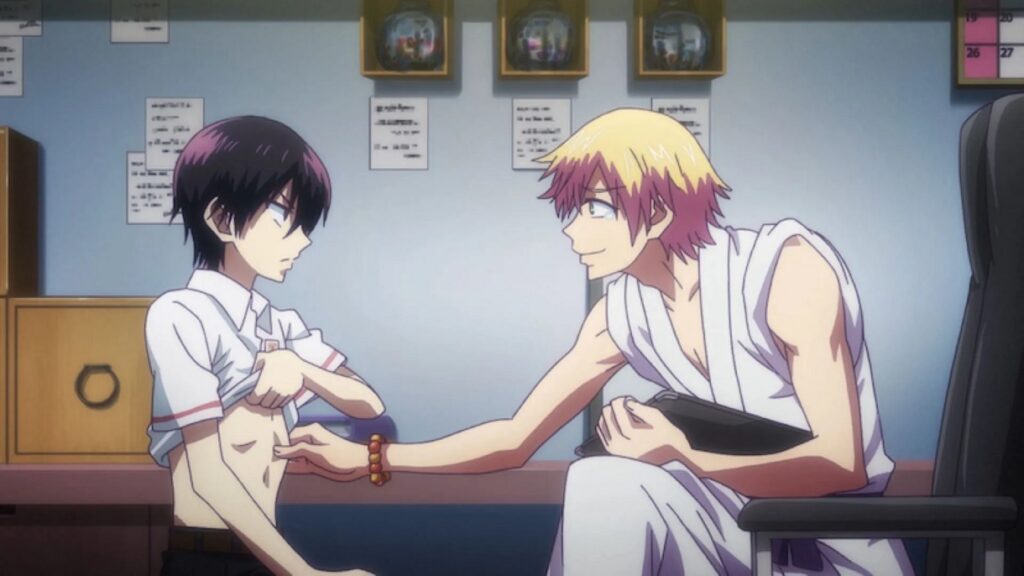
Dr. Ramune – Mysterious Disease Specialist
Not every mystery anime needs to be about solving murders. Sometimes medical mysteries can be just as interesting. However, Dr. Ramune is not quite the medical mystery you may be thinking it is.
Dr. Ramune follows a mysterious if flippant doctor who addresses only the most odd medical cases. His patients suffer uncommon ailments like crying soy sauce tears or having their ears turn to gyoza. These maladies all manifest due to some emotional turmoil that he helps them work through.
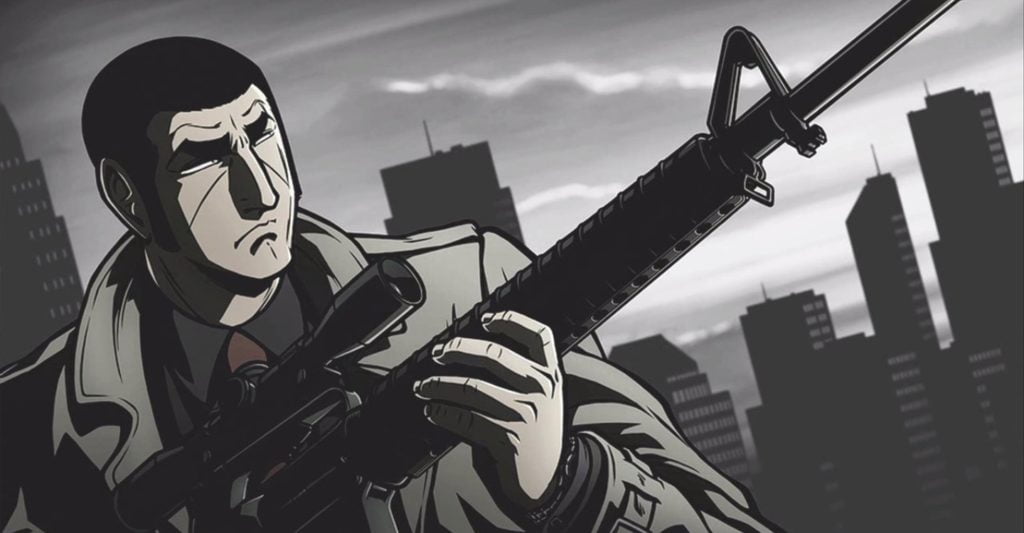
Golgo 13
Although the world’s longest running manga series, Golgo 13 has not celebrated success in anime form, likely because of how episodic the story truly is.
Golgo 13 is a story about Duke Togo, a professional assassin who takes any job for any agency – and always completes it. However, it is also a story where you go in knowing about as much about Duke Togo as you come out knowing.
You watch Golgo 13 for, I imagine, the same reasons one watches a James Bond movie. You see him masterfully infiltrate his surroundings, unravel a plot, and take down his target, sometimes taking breaks to drink, smoke, and seduce a woman.
He is a true man of mystery.
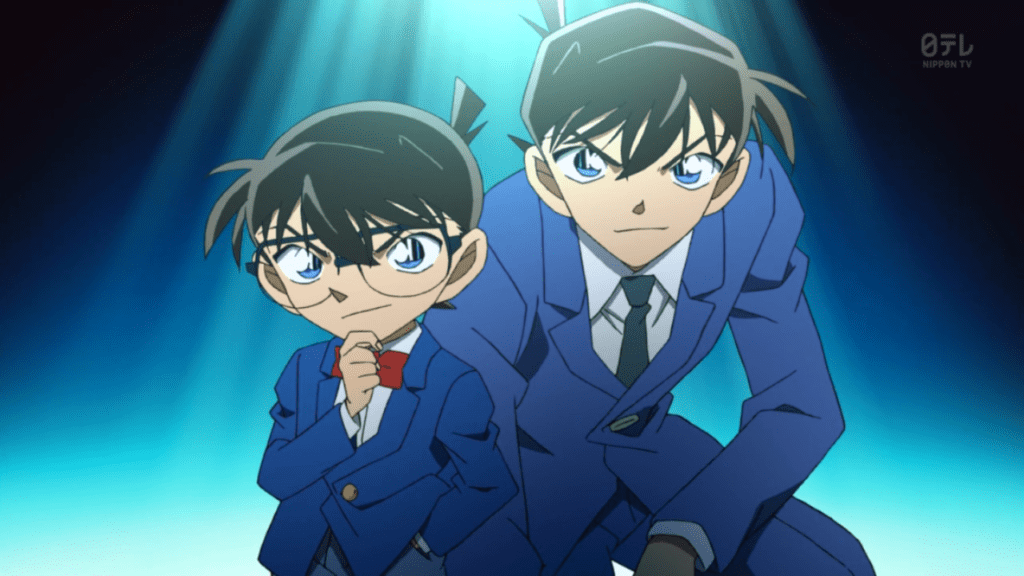
Detective Conan
There are many who enjoy episodic anime that want a single series of a significant length to enjoy. After all, why find new anime when one anime with over a thousand episodes will do? Like One Piece.
While One Piece is firmly chopped into arcs, those who want a series of an advanced length, but also want it to be largely episodic should go with Detective Conan.
Like many a detective mystery anime, Detective Conan follows a brilliant teen detective who was drugged by a shady organization and is now a child. Throughout the series, you watch him continue to solve crimes through using his girlfriend’s middling detective father as an authoritative mouthpiece while hiding his own identity.
While Detective Conan can have a few actual story arcs when it comes to its overall plot, it is primarily an episodic mystery-of-the-week series with no sign of ending.
If you are interested in more episodic murder mysteries, The Case Files of Young Kindaichi is also a fine option in the extremely similar teen detective vein of Detective Conan as well, though not nearly as long.
Do you have any more episodic anime that lack a continuous plot? Let fans know in the comments section below.
